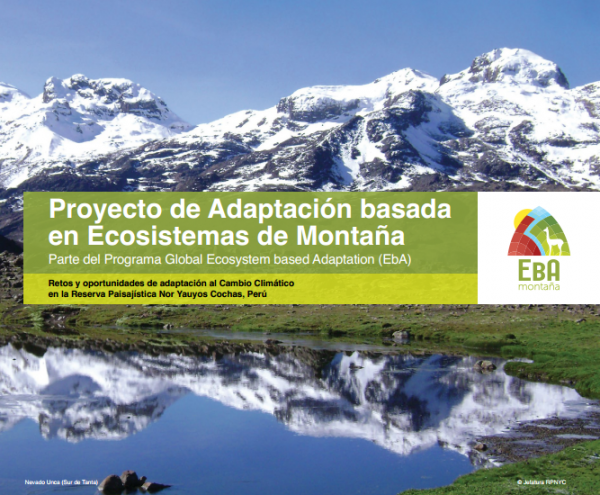Mountain EbA Pilot Project in Peru Reports Lessons Learned

The global Ecosystem-based Adaptation (EbA) Flagship Programme's Mountain Ecosystems Programme has issued a project brochure outlining EbA work underway in the Nor Yauyos Cochas Landscape Reserve (RPNYC) in the Peruvian Andes and its buffer area, as well as lessons learned so far from the project.
The RPNYC project is the pilot project selected for the global programme for Latin America, and the lessons learned will be utilized in future EbA mountain ecosystem projects in the region.
The Programme seeks to reduce the vulnerability of mountain ecosystems to climate change impacts through projects with four components:
- developing EbA decision-making tools appropriate to mountain ecosystems that cover monitoring,
- evaluation and resilience assessment;
- field testing of the tools developed at the national level;
- capacity building at pilot sites; and
- building the economic case for EbA in national development plans, policies and investments.
The Peruvian pilot project was implemented in the RPNYC communities of Canchayllo and Miraflores in partnership with national agencies, The Mountain Institute, and a team of local researchers and external specialists. The focus in these two communities was sustainable water management in support of upper micro watersheds and wetland services, and community-based sustainable native grassland management with a view to building resilience to extreme climatic events such as drought. In the RPNYC community of Tanta the project focused on promoting sustainable grasslands management through improved management of communal vicuña herds that produce valuable wool to support local livelihoods.
The brochure outlines lessons learned from the Peruvian project, including the importance of: building trust and understanding with local communities; ensuring local ownership and building local adaptive capacities; involving government actors from the beginning of the process; using mufti-disciplinary teams to help select EbA measures; using vulnerability and impact assessments (VIA) to collect key background information on, inter alia, the area's socioeconomic activities, ecosystem services and biodiversity and climatic trends; using participatory approaches throughout the planning, design and implementation phases, for buy-in by local communities; and harnessing local and traditional knowledge in the selection of EbA measures. The project also demonstrated that the current temporal and spatial distribution of atmospheric and biodiversity data on the RPNYC area is insufficient to model future projections, and that this data gap needs to be addressed.
The EbA Flagship Programme was launched jointly in December 2010 by the UN Environment Programme (UNEP), the UN Development Programme (UNDP), and the International Union or the Conservation of Nature (IUCN), with funding provided by Germany's Federal Ministry for the Environment, Nature Conservation, Building and Nuclear Safety (BMUB). The three countries chosen for the pilot phase were Nepal, Peru and Uganda.

Facebook comments